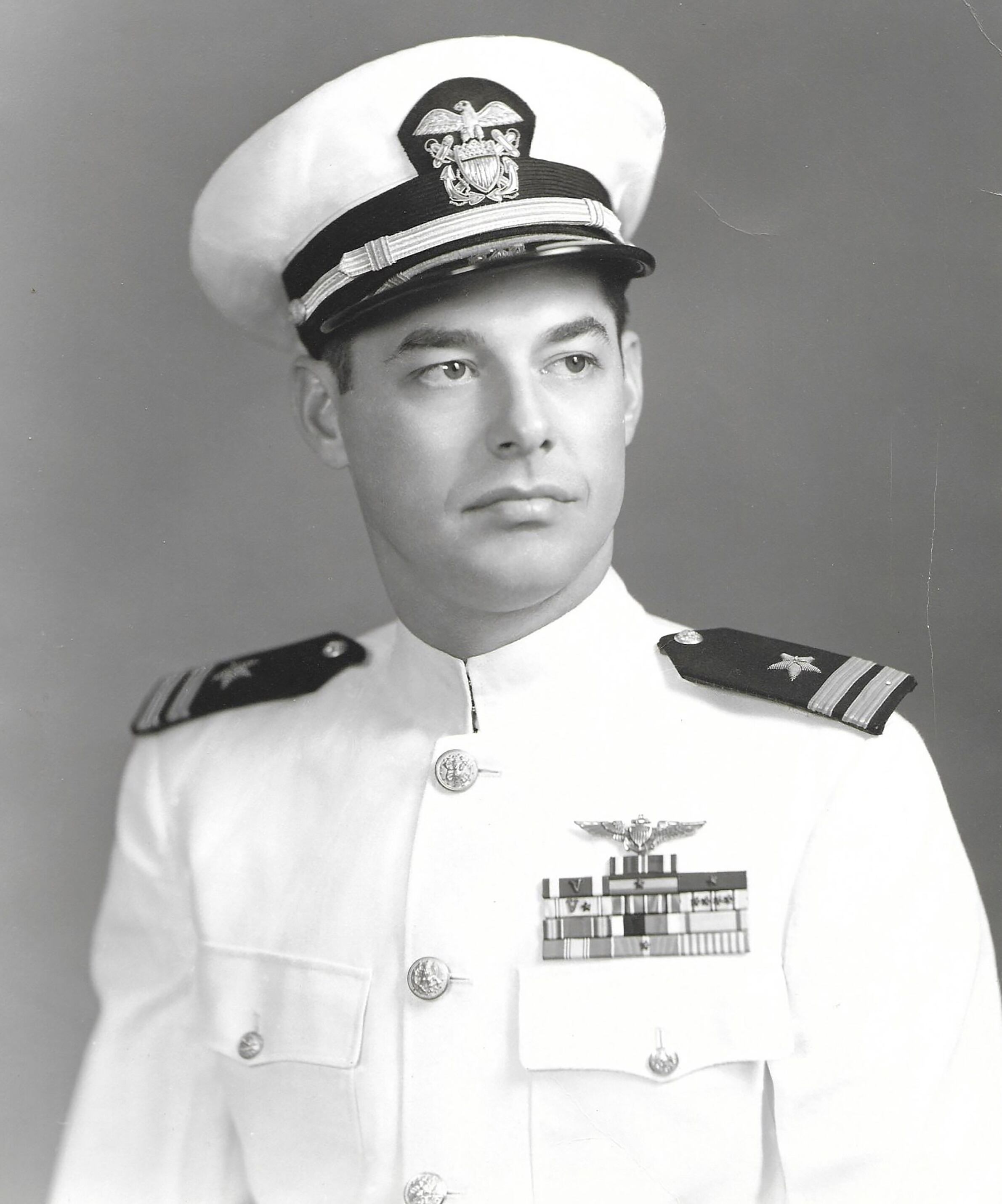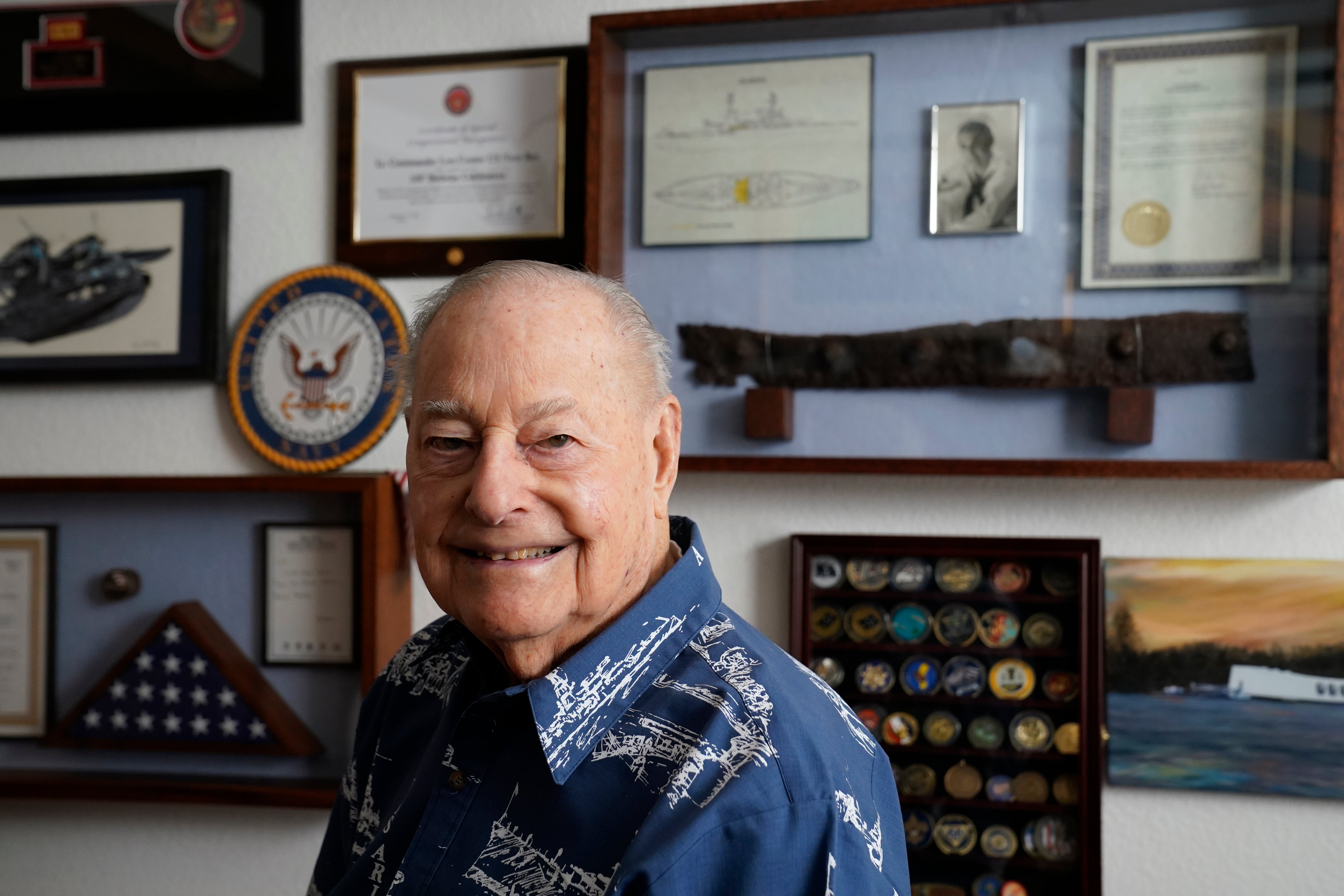The sole survivor serving aboard the USS Arizona during the Japanese attack on Pearl Harbor has died.
Lou Conter, one of the last living ties to that date of infamy, passed away this morning at his home in Grass, Valley, California, Pacific Historic Parks confirmed. He was 102.
Born in Ojibwa, Wisconsin, Conter enlisted in the U.S. Navy in 1939 at the age of 18. Two years later, he would bear witness to the attack that finally drew the United States into the Second World War.
Starting his shift as quartermaster at 7:45 a.m. on Dec. 7, 1941, Conter had barely rubbed the sleep from his eyes when the Japanese assault began a mere three minutes later.
At exactly 8:09 a.m., the hull of the USS Arizona was struck by a 1,760-pound Japanese armor-piercing bomb.
Japanese horizontal bombers swirling overhead continued to cause damage, striking the Arizona’s midship areas. The massive explosion that soon followed has never been explained, according to the Naval History and Heritage Command, since the bomb did not pierce Arizona’s armored deck. It is believed, however, that the bomb that penetrated her forward turrets struck nearly one million pounds of gunpowder, causing the turrets, conning tower and much of the superstructure to be obliterated.
The ship continued to burn for more than 48 hours after the attack.
“Minute it happened, we sounded general quarters and they were in there and we blew up in about eight minutes, nine minutes,” Conter told CBS13 in 2022.
Knocked over from the blast, Conter landed on the deck which was rapidly filling with water.
Despite the conflagration spreading throughout the badly listing ship, Conter remained composed, spending nearly 35 minutes attempting to secure the quarterdeck and saving nearly 20 sailors.

Of the 2,403 American sailors, soldiers and civilians killed that day, 1,177 came from Arizona’s crew. Conter was just one of 335 aboard the battleship to survive.
But his duty to Arizona’s crew did not cease on December 7. Conter joined numerous rescue operations to recover the bodies of his shipmates in the chaotic days that followed the attack.
However, after five days of “diligently searching, it was apparent that no one remained alive, and the risk of the operation became too high to continue,” according to a Veterans Affairs release.
“Although most of the fuel aboard the ship fed the explosion, 500,000 gallons slowly seeped from the wreckage,” the release said. “Nearly 80 years after the attack, the USS Arizona continues to spill up to 9 quarts of oil per day into the harbor. This is often referred to as the ‘tears of the Arizona.’”
Nearly 900 sailors still lie entombed in the USS Arizona.
Following the attack on Pearl Harbor, Conter entered flight school, serving as a pilot with the Navy Squadron dubbed the Black Cats due to black paint adorning the night-flying PBY Catalinas, according to VA News.
Conter survived the war, despite being shot down twice over the Pacific, and went on to serve in Korea as an air intelligence officer. Upon returning home, he worked to establish the Navy’s first SERE — Survival, Evasion, Resistance, and Escape — program and served as a military adviser to Presidents Dwight D. Eisenhower, John F. Kennedy and Lyndon B. Johnson.
Conter retired from the Navy as a lieutenant commander after 28 years of military service.
Today, fewer than two dozen survivors of the attack on Pearl Harbor attack remain alive.
“Our prayers go out to his close-knit family and friends that made up what became known as the ‘Conterage,’” Aileen Utterdyke, president and CEO of Pacific Historic Parks, wrote in a Facebook post.
“This is a heartbreaking loss. Lou Conter epitomized what it meant to be a member of the Greatest Generation, Americans whose collective courage, accomplishments and sacrifices saved our country from tyranny. He had an exemplary career in the Navy and was steadfast in imploring the schools, parents and everyday Americans to always remember Pearl Harbor.”
Claire Barrett is the Strategic Operations Editor for Sightline Media and a World War II researcher with an unparalleled affinity for Sir Winston Churchill and Michigan football.




